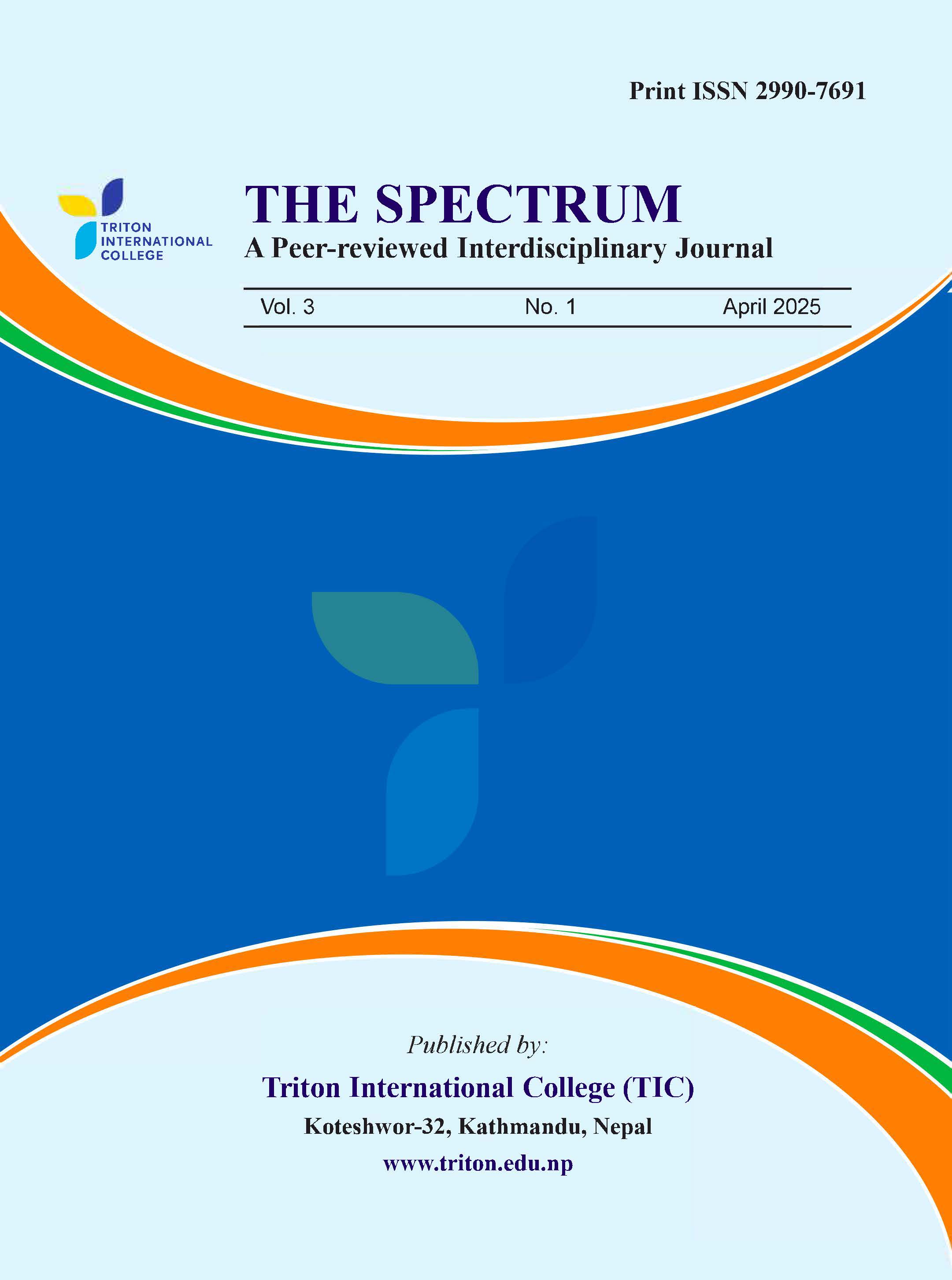Pedagogy and Home: Reading Nepali Modernity through Plays
DOI:
https://doi.org/10.3126/spectrum.v3i1.77360Keywords:
School Pedagogy, Modern Education , Drama, National EducationAbstract
This article reads Mukunda Indira (1939), Bahulakajiko Sapana (1947) and Kohi Kina Barbad Hos (1958), written for schools, and performed and watched by students and teachers as social and literary documents that record the concerns academics had had for pedagogy in need during the period. Mukunda, a graduate from a university in Calcutta of the colonial time, goes through reorientation at the end of the first play. Bire, a subaltern protagonist in the second play, though performs excellently well academically, dies because of poverty at the end. Kamala, the teacher and Sundar, the Principal become successful in bringing transformation in Dhruva, a spoilt student in the third play. Interpreted through John Dewey’s critical views on pedagogy, these plays can be taken as the important materials to map out the pedagogical shift that modern education in Nepal did take place. It concludes that while sharing stories about a graduate lost in Calcutta, a talent Dalit boy who dies at the end, and teacher and student trying to learn from each other, these plays dramatize the academic issue—the pedagogy that Nepalis needed to address at home to become modern.
Downloads
Downloads
Published
How to Cite
Issue
Section
License

This work is licensed under a Creative Commons Attribution-NonCommercial 4.0 International License.
This license allows reusers to distribute, remix, adapt, and build upon the material in any medium or format for non-commercial purposes only, and only so long as attribution is given to the creator.




